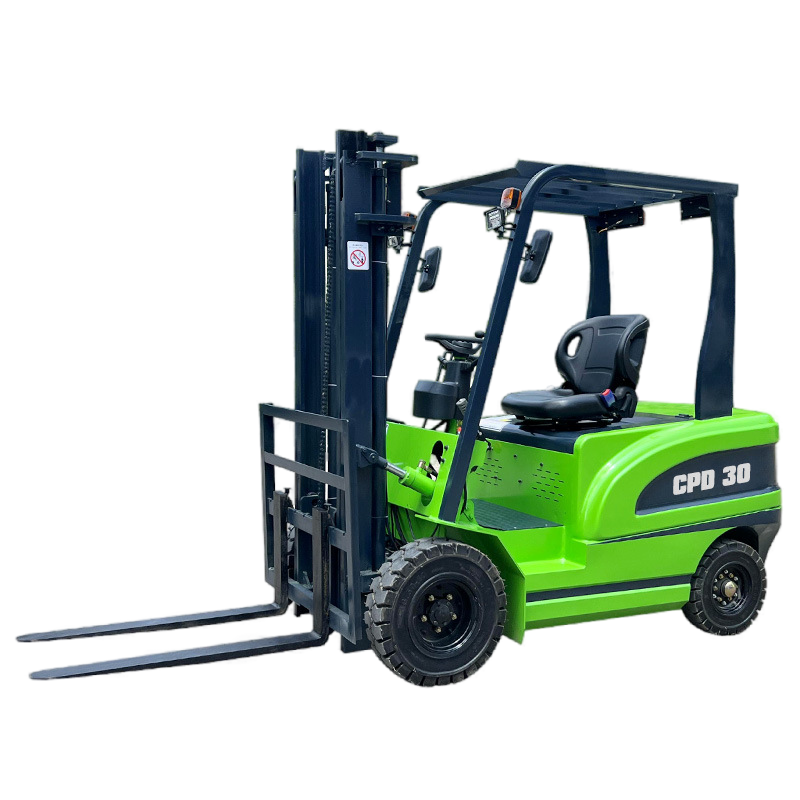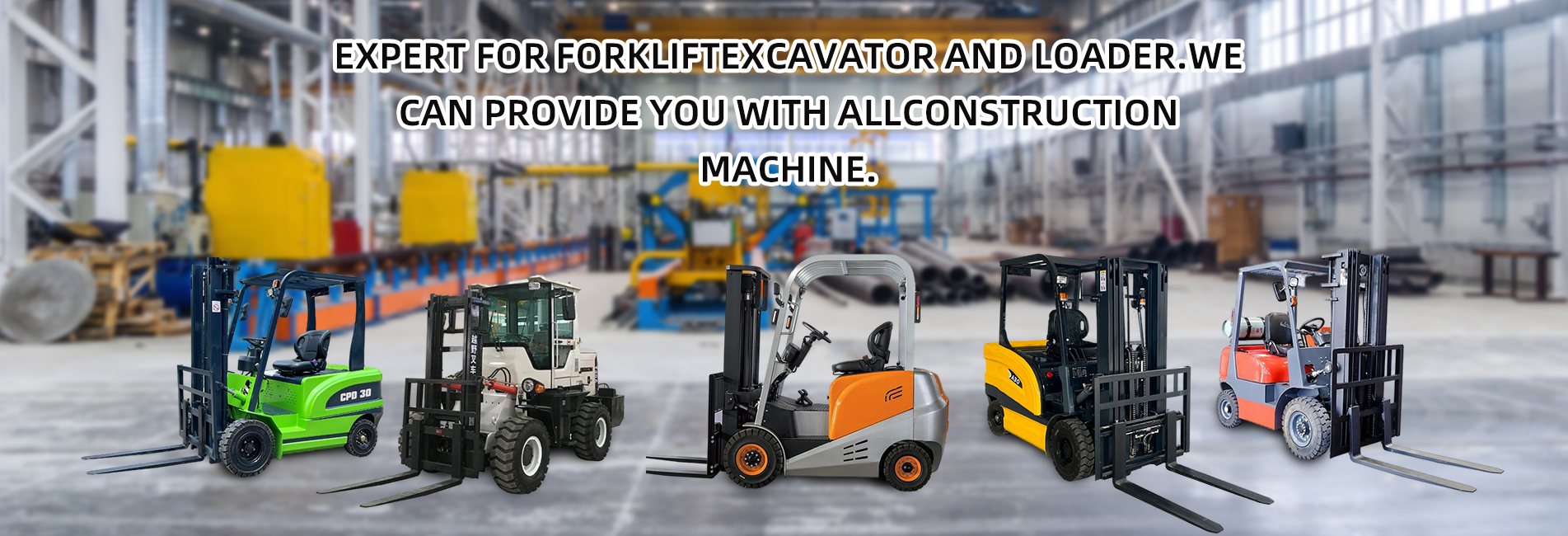The control of an electric forklift is an integrated system that combines mechanical, electrical, hydraulic, and intelligent technologies. Its core goal is to achieve precise operations such as driving, lifting, loading, and unloading while ensuring safety and efficiency. The following is a detailed analysis from the aspects of control core, key control systems, operation logic, and safety control:

I. Control Core: Controller (ECU/VCU)
The control core of an electric forklift is the Electronic Control Unit (ECU) or Vehicle Control Unit (VCU), which acts as the "brain" responsible for receiving various signals and coordinating executive components:
- Signal input: Including signals from operating handles/pedals (acceleration, braking, steering, lifting) and sensor signals (battery power, motor temperature, driving speed, fork height), etc.
- Logical operation: Processes input signals according to preset programs (such as power output curves, safety protection thresholds) and calculates control commands for the motor, hydraulic pump, and steering system.
- Execution output: Controls motor speed, hydraulic valve switches, braking devices, etc., through electrical signals to achieve precise operations.
II. Key Control Systems
1. Driving Control System
- Drive motor control:
Electric forklifts mostly use DC permanent magnet motors or AC asynchronous motors, and speed regulation is achieved through frequency conversion speed control technology:- When the driver steps on the accelerator pedal, the pedal sensor converts the displacement signal into an electrical signal and transmits it to the controller. The controller adjusts the voltage/current of the motor to change the speed (similar to a car throttle).
- Forward/backward switching controls the forward and reverse rotation of the motor through a reverse switch. The controller ensures that reversing is only allowed after the vehicle has come to a complete stop (to prevent impact).
- Brake control:
- Service braking: When the brake pedal is pressed, mechanical braking (brake pads) works in conjunction with energy recovery braking — during deceleration, the motor switches to generator mode, recovering kinetic energy and converting it into electrical energy to recharge the battery (extending battery life).
- Parking braking: The drive wheels are mechanically locked through a handbrake or foot-operated parking device to prevent the vehicle from rolling.
- Steering control:
- Small forklifts mostly use mechanical steering (manual-assisted hydraulic), while large forklifts commonly use full hydraulic steering: When the steering wheel is turned, the controller controls the flow of the steering hydraulic pump, driving the steering cylinder to achieve steering. Some high-end models are equipped with electric power steering (EPS) for easier steering.
2. Hydraulic Control System (Lifting and Loading/Unloading)
It is responsible for the movements of the fork such as lifting, tilting forward/backward, and lateral movement (in some models), with the core being the hydraulic pump + solenoid valve group:
- When the driver operates the lifting/lowering handle, the handle sensor transmits a signal to the controller. The controller controls the speed of the hydraulic pump motor (adjusting the flow of hydraulic oil) and, through the on/off/opening of the solenoid valve, controls the direction and flow of hydraulic oil entering the lifting cylinder and tilting cylinder to achieve precise movements of the fork (such as slow lifting and fast lowering).
- Key parameters: Lifting speed, lowering speed, and forward/backward tilting angle can be preset by the controller to avoid overloading or overspeed (for example, the speed is automatically limited when the fork is raised to the highest position).
3. Battery Management System (BMS)
Although it is not part of direct operation control, it is crucial for the operation of the forklift:
- It monitors the battery's voltage, current, temperature, and SOC (state of charge) in real-time to prevent overcharging, over-discharging, and overheating (prolonging battery life).
- When the battery power is too low or the battery is abnormal, it issues an alarm (acousto-optic prompt) through the controller and even limits power output (forced power reduction).
III. Operation Logic and Human-Machine Interaction
- Operating devices:
Core operating components include: accelerator pedal, brake pedal, forward/backward gear lever, lifting/lowering handle, forward/backward tilting handle, steering wheel, and parking brake.
Some high-end models are equipped with LCD screens that display real-time information such as power, speed, and fault codes, facilitating the driver to monitor the status. - Operation logic:
- Startup: insert the key or swipe an NFC card. The controller detects the battery status and safety devices (such as seat belts, door frame limits) and allows startup only if the conditions are met.
- Coordination between driving and operation: For example, when the fork is raised to a certain height, the controller will automatically limit the driving speed (to prevent rollover); when overloaded, the power output curve is smoother (to avoid motor overload).
IV. Safety Control Functions
The control system of electric forklifts has built-in multiple safety protections, which is one of the core designs:
- Overload protection: When the lifting weight exceeds the rated value, the controller cuts off the power supply of the lifting motor and alarms at the same time.
- Limit protection: When the fork is raised to the highest position or lowered to the lowest position, the limit switch is triggered, and the controller stops the corresponding action (to prevent mechanical damage).
- Ramp anti-roll: When parking on a slope, the controller automatically applies braking (requiring cooperation with sensors to detect the slope).
- Emergency stop: An emergency power-off button is equipped. When pressed, it immediately cuts off the power supply of all motors to force the vehicle to stop.
Summary
The control of an electric forklift is essentially "electrical signals driving mechanical actions". Through the controller integrating operation instructions, sensor data, and safety logic, efficient, precise, and safe operations are achieved. Compared with traditional internal combustion forklifts, the control system of electric forklifts is more complex (involving the coordination of motors, batteries, and hydraulics), but it has the advantages of fast response speed, controllable energy consumption, smoother operation, and easy performance optimization through software upgrades (such as adjusting power modes and extending battery life). In daily use, regular maintenance of controllers, sensors, and hydraulic valves is the key to ensuring control accuracy.


